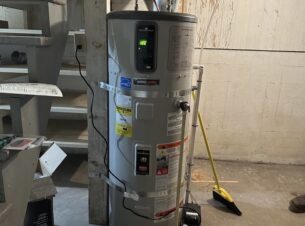Constructing energy-efficient homes and buildings favorably impacts the economic development of communities, meets consumer demand and saves valuable resources. Week four of the International Code Council’s Building Safety Month 2013, sponsored by the American Gas Association, focuses on energy and green building. Efficient buildings can improve energy security, reduce stress on the power grid and on natural gas supplies, improve local air quality and save homeowners money, according to the Alliance to Save Energy.
![]() The earliest building codes addressed fire prevention, structural reliability and other fundamental safety factors. Green practices in the construction industry are a next step in the evolution of safety codes—the guidelines cities and states use to ensure public safety in buildings.
The earliest building codes addressed fire prevention, structural reliability and other fundamental safety factors. Green practices in the construction industry are a next step in the evolution of safety codes—the guidelines cities and states use to ensure public safety in buildings.
![]() While green is a popular topic today, safe and sustainable construction dates back at least 40 years to the 1973 energy crisis. Today, three major documents based on the most current building science available are used to construct sustainable buildings: the International Energy Conservation Code (IECC), the International Green Construction Code (IgCC) and the National Green Building Standard ICC 700-2012.
While green is a popular topic today, safe and sustainable construction dates back at least 40 years to the 1973 energy crisis. Today, three major documents based on the most current building science available are used to construct sustainable buildings: the International Energy Conservation Code (IECC), the International Green Construction Code (IgCC) and the National Green Building Standard ICC 700-2012.
![]() Nine out of 10 home buyers would rather buy a home with energy-efficient features and permanently lower utility bills than one without those features that costs 2 percent to 3 percent less, according to a National Association of Home Builders study. Some of the most desired features identified involve saving energy, including energy-star rated appliances and windows, and an energy-star rating for the whole home. Natural gas can help homeowners conserve energy and save money. America’s natural gas delivery system is extraordinarily efficient with 92 percent of natural gas produced at the well being delivered to homes and businesses as usable energy. Additionally, a household with natural gas versus all-electric appliances produces 37 percent lower greenhouse gas emissions.
Nine out of 10 home buyers would rather buy a home with energy-efficient features and permanently lower utility bills than one without those features that costs 2 percent to 3 percent less, according to a National Association of Home Builders study. Some of the most desired features identified involve saving energy, including energy-star rated appliances and windows, and an energy-star rating for the whole home. Natural gas can help homeowners conserve energy and save money. America’s natural gas delivery system is extraordinarily efficient with 92 percent of natural gas produced at the well being delivered to homes and businesses as usable energy. Additionally, a household with natural gas versus all-electric appliances produces 37 percent lower greenhouse gas emissions.
Homeowners looking to make existing homes more energy-efficient can:
- Increase and/or replace attic insulation, making sure there is appropriate ventilation
- Seal heat or energy loss areas such as windows and door frames
- Install a programmable thermostat
- Replace older toilets with low-flow ones to reduce water usage
![]() A World Green Building Council report says green buildings have been shown to save money through reduced energy and water consumption, and lower long-term operations and maintenance costs. The energy savings alone typically exceed any cost premiums associated with design and construction within a reasonable payback period.
A World Green Building Council report says green buildings have been shown to save money through reduced energy and water consumption, and lower long-term operations and maintenance costs. The energy savings alone typically exceed any cost premiums associated with design and construction within a reasonable payback period.
![]() A McGraw-Hill Construction survey says construction companies worldwide are shifting their business toward green building, with 51 percent of respondents saying they expect more than 60 percent of their work to be green by 2015.
A McGraw-Hill Construction survey says construction companies worldwide are shifting their business toward green building, with 51 percent of respondents saying they expect more than 60 percent of their work to be green by 2015.
![]() Learn more about Building Safety Month and download free safety information at www.buildingsafetymonth.org.
Learn more about Building Safety Month and download free safety information at www.buildingsafetymonth.org.
The American Gas Association, founded in 1918, represents more than 200 local energy companies that deliver clean natural gas throughout the United States. There are more than 71 million residential, commercial and industrial natural gas customers in the U.S., of which 92 percent—more than 65 million customers—receive their gas from AGA members. Today, natural gas meets almost one-fourth of the United States' energy needs.
![]() The International Code Council is a member-focused association. It is dedicated to developing model codes and standards used in the design, build and compliance process to construct safe, sustainable, affordable and resilient structures. Most U.S. communities and many global markets choose the International Codes.
The International Code Council is a member-focused association. It is dedicated to developing model codes and standards used in the design, build and compliance process to construct safe, sustainable, affordable and resilient structures. Most U.S. communities and many global markets choose the International Codes.




Join the conversation: